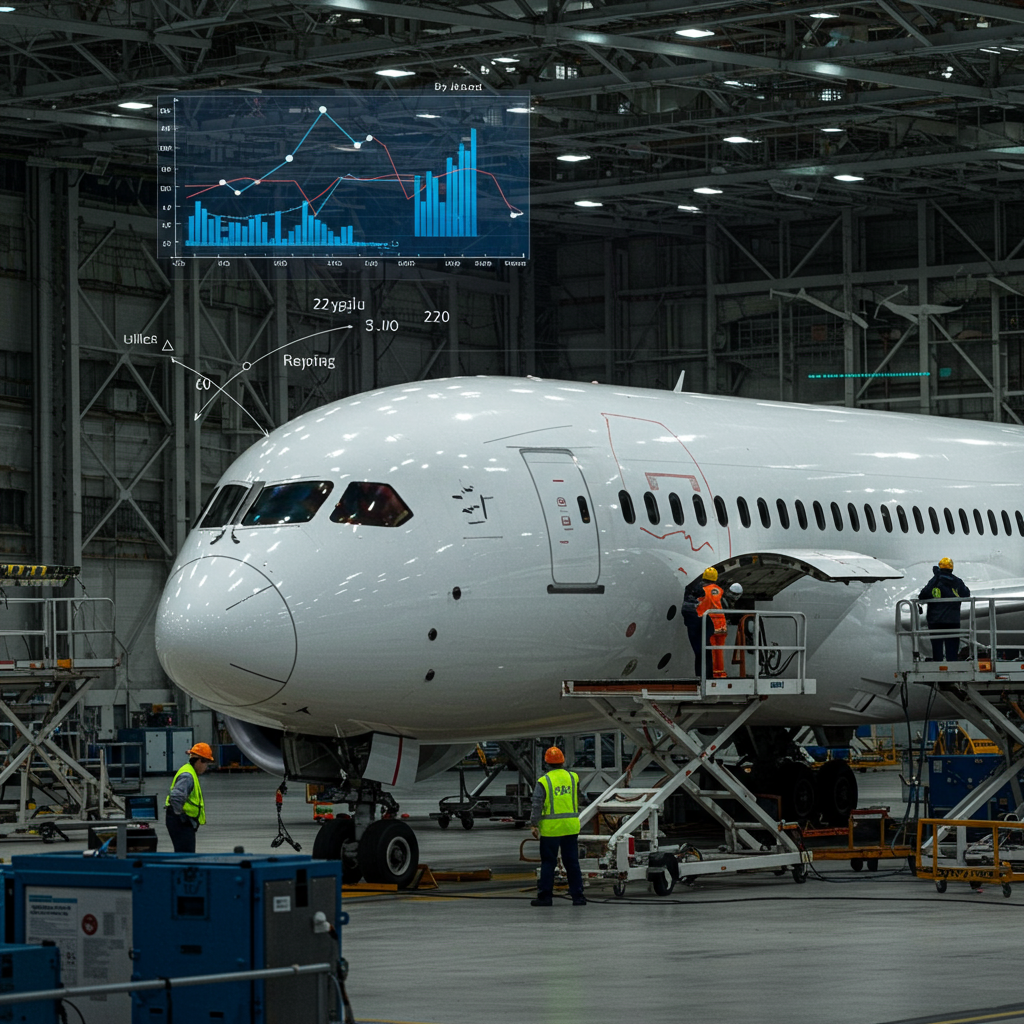The tragic crash of Air India flight 171 near Ahmedabad, resulting in over 270 fatalities, has intensely focused the world’s attention on the boeing 787 Dreamliner. This widebody aircraft, once celebrated for its innovation and previously holding an impressive safety record, is now under renewed scrutiny. The investigation into the incident is just beginning, with crucial black box data retrieved. This event, however, reopens the conversation about the Dreamliner’s complex history, production challenges, and persistent allegations from whistleblowers regarding manufacturing quality.
The Dreamliner Takes Flight: A Vision for Modern Air Travel
Boeing conceived the 787 Dreamliner during a period of rising fuel prices and shifting travel patterns after 9/11. Initially exploring a faster concept called the “Sonic Cruiser,” Boeing pivoted towards fuel efficiency. Airlines were increasingly interested in flying smaller, long-range jets directly between cities, bypassing traditional hub-and-spoke systems. The 787 was designed to meet this demand, offering significant fuel savings compared to older aircraft.
The design marked a radical departure for Boeing. It was the first major commercial airliner built primarily from composite materials like carbon fiber. This made the aircraft lighter and more fuel-efficient. The 787 also incorporated advanced aerodynamics and largely replaced traditional mechanical systems with lighter, more efficient electrical ones. This approach contrasted sharply with Airbus’s focus on the massive A380 superjumbo, designed for high-volume routes between major hubs. In hindsight, Boeing’s bet on point-to-point travel proved more successful, with over 1,100 Dreamliners delivered globally compared to the A380’s discontinuation after 251 units.
Navigating Early Turbulence: Initial Safety Challenges
The Dreamliner’s service history wasn’t entirely smooth from the outset. Early in 2013, two separate incidents involving lithium-ion batteries raised serious concerns. One occurred after landing in Boston, while another forced a domestic flight in Japan to return. These events prompted aviation regulators to ground the entire global 787 fleet temporarily.
Boeing responded by redesigning the battery system. This involved improved insulation and housing the batteries in a protective stainless steel box. The FAA approved the changes, and the fleet returned to service. However, these early incidents highlighted the potential risks associated with introducing cutting-edge technology under tight production timelines.
Persistent Production and Quality Concerns
Beyond the early battery issues, the 787 program has faced a string of manufacturing and quality control problems, particularly since 2019. These issues have involved how fuselage sections fit together, component traceability, and electrical system safety. The problems became significant enough to halt deliveries on two occasions between 2021 and 2023.
Intensified inspections during these periods uncovered numerous defects. These manufacturing lapses raised questions about the consistency and reliability of the production process, especially at Boeing’s North Charleston, South Carolina plant. The plant was established partly to leverage lower unionization rates and state incentives, but it has frequently been at the center of quality allegations.
Whistleblowers Raise Alarms
Internal voices have been crucial in highlighting potential issues within Boeing’s production system. Several whistleblowers, including former quality managers and current engineers, have come forward with alarming allegations. The late John Barnett, a former quality manager at the South Carolina plant, was a prominent voice. He alleged that defective parts from scrap bins were sometimes used to avoid production delays.
Barnett also claimed that metal shavings were left near critical wiring connecting flight control systems. He warned this could pose a catastrophic risk. While Boeing initially denied these specific claims, an FAA inspection partially supported some points, confirming missing non-conforming parts and the presence of metal shavings. Boeing stated the shavings did not pose a flight safety risk and subsequently improved processes.
Other whistleblowers have added to the concerns. Cynthia Kitchens, another former quality manager, spoke of pressure to overlook substandard work and the alleged use of defective wiring bundles. More recently, current Boeing engineer Sam Salehpour testified before a Senate committee. He alleged shortcuts in assembly methods introduced around late 2020 led to persistent issues.
Salehpour specifically cited problems with tiny gaps in fuselage joints not being properly addressed. He warned these uncorrected issues could lead to premature fatigue failure across hundreds of Dreamliners, potentially having catastrophic consequences over time. Boeing has strongly pushed back against these specific allegations. The company insists that extensive analysis, monitored by the FAA, confirms the structural integrity of the in-service fleet and that these issues do not pose safety concerns.
Corporate Culture, Oversight, and Public Trust
Boeing’s credibility has suffered significantly in recent years, particularly following the two fatal crashes involving its 737 MAX aircraft. The persistent quality issues and whistleblower allegations surrounding the 787 program further strain public and regulatory trust. The company, under new leadership, has stated it is committed to internal reforms and improving collaboration with regulators like the FAA. However, regaining lost confidence is a significant challenge.
Experts offer varied perspectives on the 787’s overall safety. Aviation analyst Richard Aboulafia points to the fleet’s extensive operational history. He notes that over 1,100 Dreamliners have flown for over a decade without a prior fatal crash. He argues that any major structural flaws would likely have manifested by now. He also notes increased scrutiny on recent production.
Conversely, critics like Ed Pierson, formerly of Boeing and now with the Foundation for Aviation Safety, have previously raised concerns. They pointed to issues such as potential water leaks into electrical bays, which prompted FAA directives for inspections. These differing views highlight the complexity of assessing risk, balancing a strong operational record against persistent allegations of manufacturing shortcomings.
The Air India Crash: An Urgent Investigation
The Air India Flight 171 that crashed was an older aircraft, having been in service since 2013. The investigation is in its early stages. Authorities will meticulously examine the flight data and cockpit voice recorders. Potential contributing factors under evaluation include everything from possible design flaws and manufacturing defects to maintenance lapses specific to the airline or operational issues during takeoff.
Previous issues, such as reports of undetected water leaks near electrical systems, may also be revisited in the context of the investigation. However, aviation safety experts widely caution against premature conclusions. As aviation consultant Scott Hamilton noted, the precise cause remains unknown. Based on the aircraft’s historical performance, he would not hesitate to fly on a 787.
Looking Ahead: Uncertainty for the Fleet
The outcome of the Air India crash investigation is critical. It will shape the future perception of the Boeing 787 Dreamliner and could potentially lead to further regulatory actions. Depending on the findings, there could be requirements for fleet-wide inspections or modifications.
Any disruption, such as a temporary grounding of part or all of the 1,100+ Dreamliner fleet, would present significant challenges for airlines and travelers globally. However, as the recent tragedy underscores, the paramount concern remains preventing loss of life. The ongoing scrutiny of the 787 program’s history, manufacturing quality, and the investigation into the Air India crash serve as a stark reminder that technological advancement must always be paired with unwavering commitment to rigorous safety standards throughout an aircraft’s lifecycle.
Frequently Asked Questions
What are the primary safety concerns that have been raised about the Boeing 787 Dreamliner?
Safety concerns for the 787 have evolved over time. Initially, there were significant issues with lithium-ion batteries in 2013, leading to a global grounding until a redesigned system was implemented. More recently, concerns focus on manufacturing quality control, particularly regarding how fuselage sections are joined, component traceability, and potential issues like unresolved gaps or contamination near wiring. Whistleblowers have alleged the use of defective parts and unsafe assembly practices, although Boeing disputes the severity of these specific claims regarding flight safety.
What is the status of the investigation into the recent Air India Flight 171 crash involving a 787?
The investigation into the Air India Flight 171 crash is in its early stages. Black box data recorders (flight data recorder and cockpit voice recorder) have been retrieved and are being analyzed. Investigators are examining multiple potential factors, including aircraft design, manufacturing history, maintenance records for the specific aircraft involved (which was over 11 years old), and operational procedures during takeoff. Aviation safety experts caution against drawing conclusions before the investigation is complete.
Given the concerns and the recent crash, is it still considered safe to fly on a Boeing 787 Dreamliner?
Prior to the recent Air India crash, the Boeing 787 had an exceptional safety record, flying over a billion passengers without a fatal accident for nearly 16 years. This extensive operational history is cited by some experts as evidence of its inherent safety. While persistent manufacturing quality issues and whistleblower allegations are serious and under scrutiny, regulatory bodies like the FAA continue to monitor Boeing’s production. Many aviation safety experts, while acknowledging the concerns, still state they would feel safe flying on a 787 based on its overall track record, emphasizing the need to await the results of the current investigation before making definitive judgments about the cause of the crash and any fleet-wide implications.



